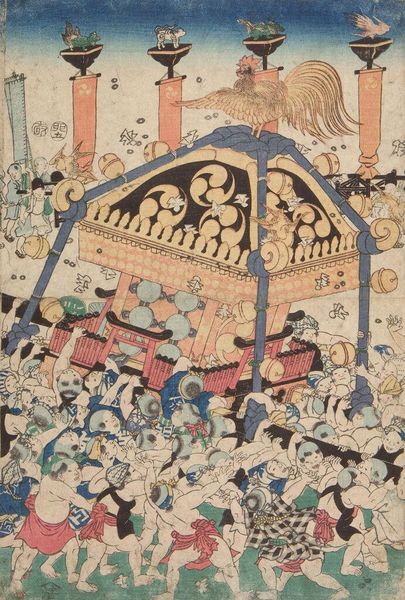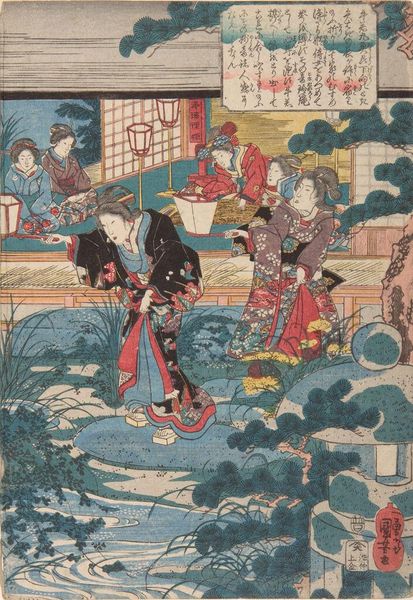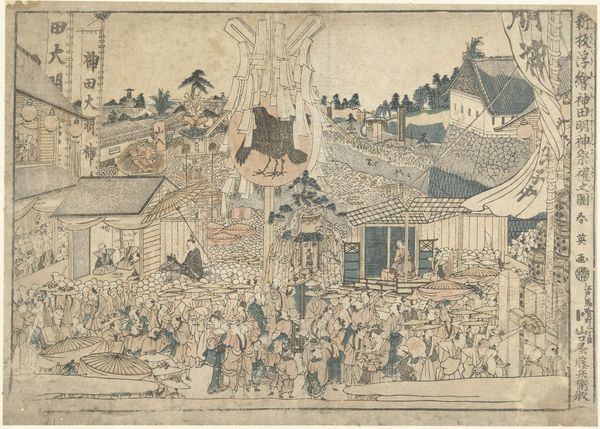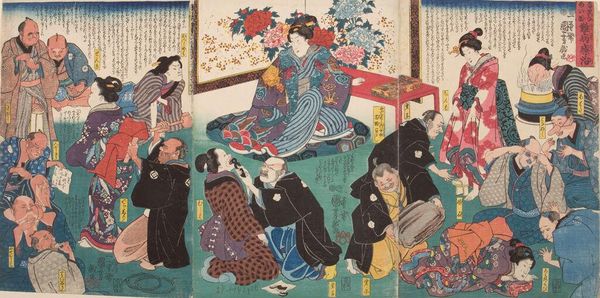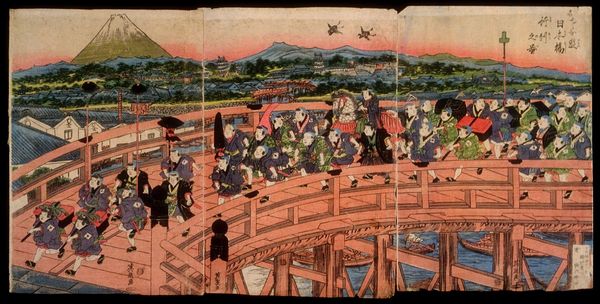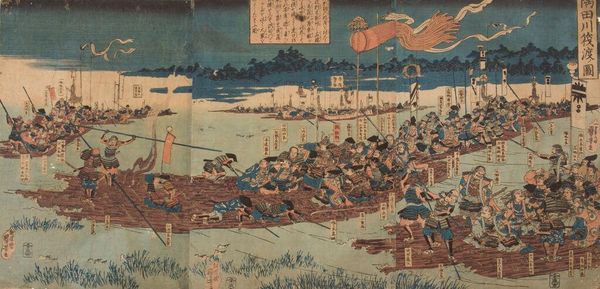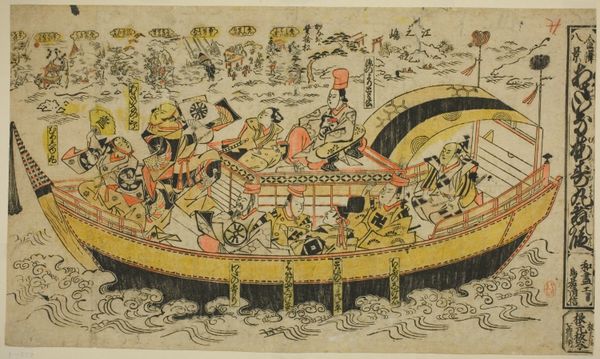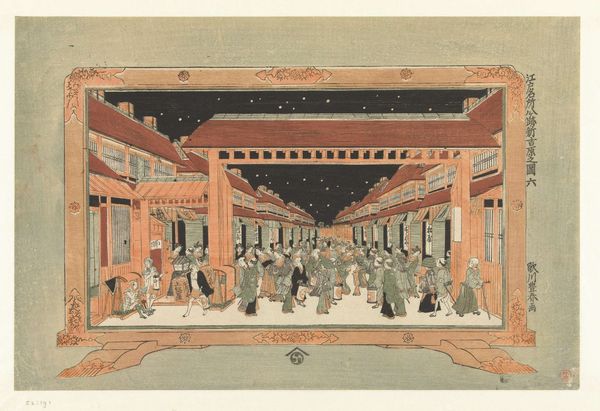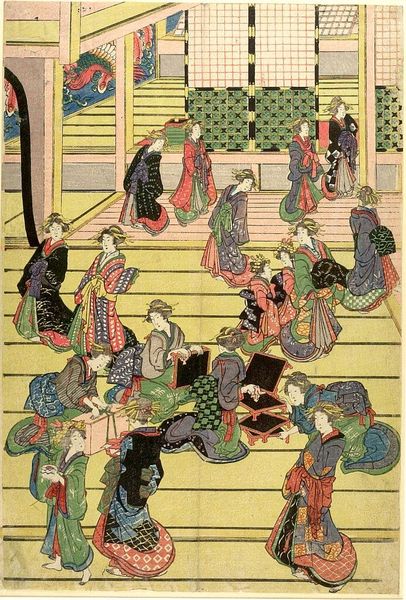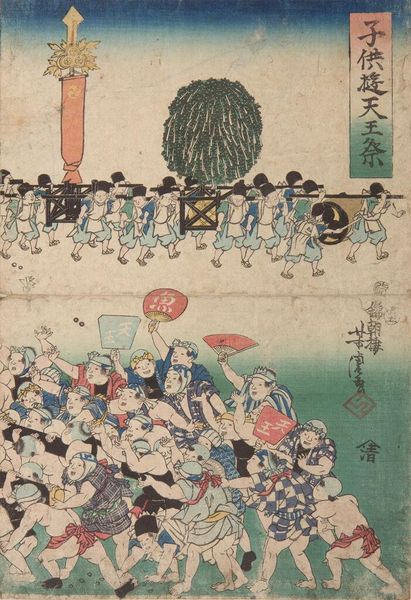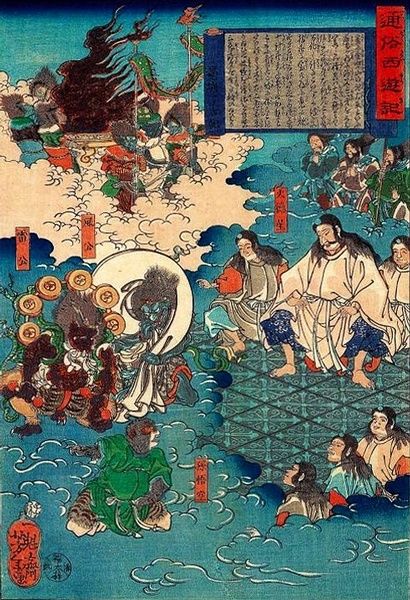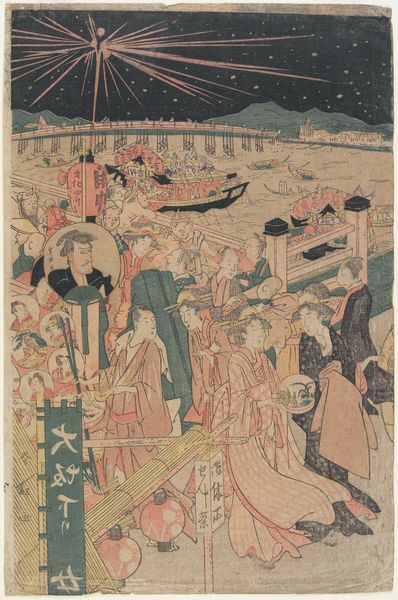
Children at Play: TennÅ Festival (Kodomo asobi TennÅ matsuri) c. 19th century
0:00
0:00
Dimensions: overall for matted triptych: H. 36.3 x W. 74.1 cm (14 5/16 x 29 3/16 in.)
Copyright: CC0 1.0
Curator: Utagawa Yoshitora’s “Children at Play: TennÅ Festival,” found at the Harvard Art Museums, offers us a glimpse into the social life of 19th-century Japan. Editor: Whoa, it’s a total riot of colour and energy! Looks like a chaotic dance. Curator: The print captures a festival scene, likely the Gion Matsuri, reworked for a child's perspective, reflecting how these events were crucial for communal identity. Editor: I see the traditional procession, but it’s like…a joyful free-for-all. All these kids, their faces alight, pulling and pushing… It makes me think about the controlled chaos of childhood. Curator: Indeed, Yoshitora’s work highlights the evolving role of children in public life and how festivals offered a space for them to participate in and learn about societal structures. Editor: I get the feeling that it's not just about looking at the festival, but also at ourselves, at our roots, and how we engage with tradition. Curator: Precisely, and the print serves as a vivid historical document, prompting us to reflect on continuity and change. Editor: For me, it's about remembering to let go, to embrace the mess, and find the joy in the middle of it all.
Comments
No comments
Be the first to comment and join the conversation on the ultimate creative platform.
